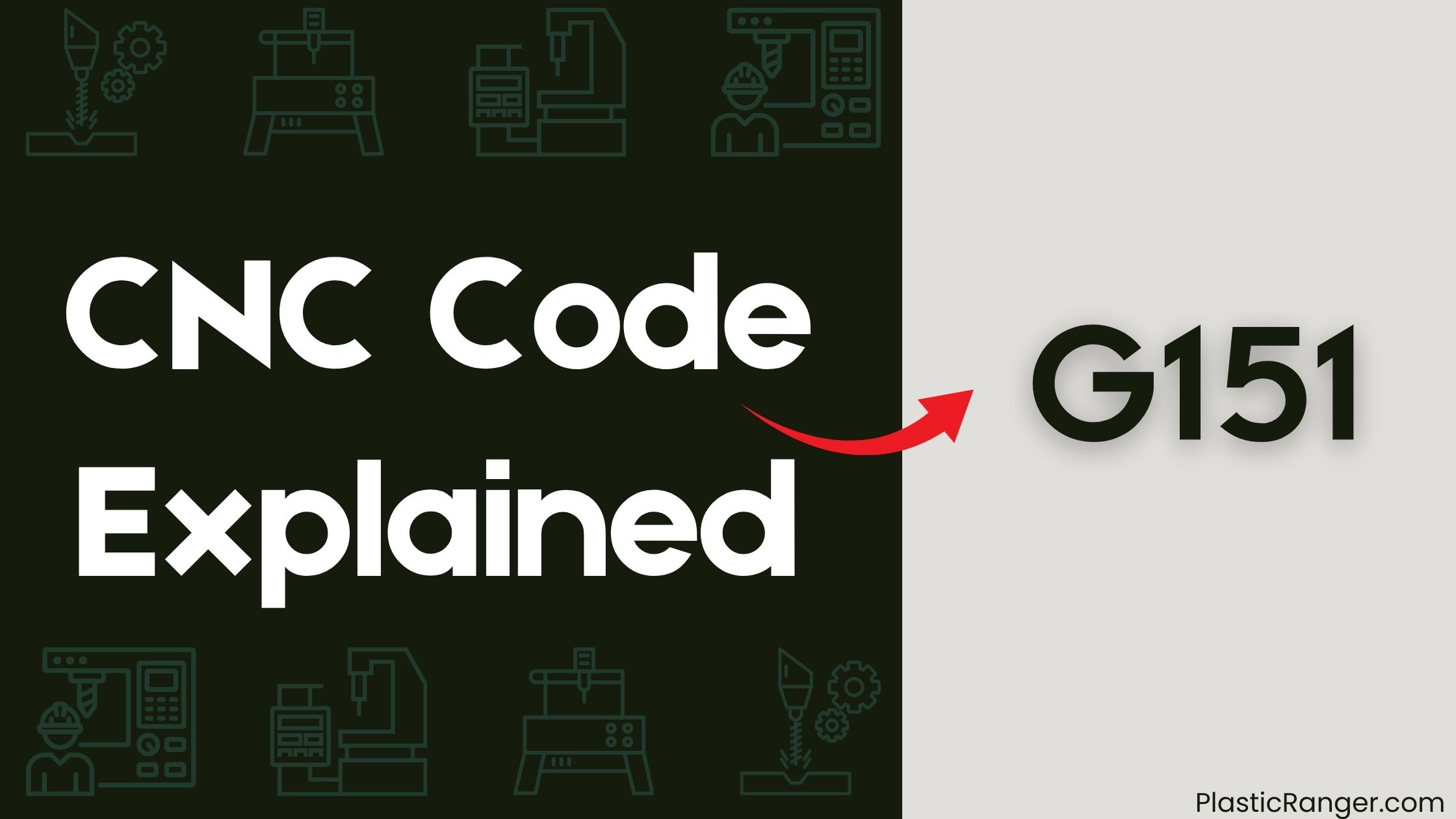Welcome to our simple guide on the G151 CNC code. Whether you are new to CNC programming or an experienced machinist, understanding the G151 code is essential.
This guide will explain everything you need to know about this unit mode command—what it is, when to use it, and why it matters.
(Step-by-step.)

Key Takeaways
- G151 is a modal function that excludes axes in the zero offset for precise control over machine movements in CNC machining.
- The code remains in effect until cancelled or replaced, making it efficient for complex movements and repetitive tasks.
- G151 can be programmed in conjunction with other G-codes, like G90 and G91, to create complex movement patterns and customize machine control.
- The format for G151 is simple: G151 axes, where axes specifies the axes to be excluded from the zero offset.
- Mastering G151 enables precise cutter radius compensation, tool radius, fixture offset, and local coordinate management, leading to improved efficiency and productivity.
G-Code Fundamentals Explained
When working with CNC machines, understanding G-code fundamentals is essential for creating efficient and accurate programs.
You need to grasp the concept of a coordinate system, which defines the machine’s movement. A zero offset is used to shift the origin of the coordinate system, while a Tool Length Offset accounts for the length of the tool.
Function G codes, like G151, are modal functions that remain in effect until cancelled or replaced. They can be used in conjunction with other G codes and M codes to create complex programs.
You’ll also encounter canned cycles, which simplify repetitive tasks. Understanding these G-code fundamentals is pivotal for writing effective programs and avoiding errors.
Programming With G151 CNC Code
With G-code fundamentals under your belt, you’re ready to plunge into the specifics of programming with G151 CNC code.
This code allows you to exclude axes in the zero offset, giving you more precise control over machine movements. When you use G151, the CNC machine ignores the zero offset for the specified axes, enabling you to set a new reference point.
You can program G151 in conjunction with other G-codes, like G90 and G91, to create complex movement patterns. The format is simple: G151 axes, where axes specifies the axes to be excluded.
As a modal code, G151 remains in effect until cancelled or replaced, making it efficient for complex movements. By mastering G151, you can accurately control the tool axis and coordinate movements, ensuring precise results.
CNC Machine Control Functions
You’re now working with a range of CNC machine control functions that enable precise movement and positioning.
The G151 function is a modal function that excludes axes in the zero offset, allowing for accurate control over machine movements. It remains in effect until cancelled or replaced by another function, and is incompatible with function G92, zero offsets, and probing.
When you power up your CNC machine, it restores 100% of acceleration for all axes, ensuring precise movement. You can customize machine control by programming percentages, which are absolute, and determine how they’re applied to rapid traverse movements using the #SLOPE instruction.
This precise control enables you to achieve accurate results in your CNC machining operations.
G-Code Applications and Industries
G-codes, like G151, have become an essential part of various industries where precision and accuracy are paramount. These industries rely on G-codes to produce complex parts and components with high precision and accuracy.
| Industry | Application |
|---|---|
| Aerospace | Intricate parts and components |
| Automotive | Complex car parts, engine components, and gearboxes |
| Medical | Medical implants, surgical instruments, and precision devices |
| CNC Machining | Exclusion of axes in the zero offset |
| Manufacturing | Complex manufacturing processes |
You’ll find G151 and other G-codes in use across these industries, where precision and accuracy are vital. By using G-codes, manufacturers can guarantee that their products meet the required standards, and you can be confident in the quality of the final product.
Importance of G151 CNC Code
As you examine the role of G-codes in various industries, it becomes clear that specific codes like G151 play a pivotal part in ensuring precision and accuracy.
This modal function allows you to exclude axes in the zero offset, giving you more control over machine movements. By specifying which axes to exclude, you can perform complex machining operations with ease.
G151 is particularly useful when working with irregularly shaped parts or complex geometries, where the machine’s zero offset needs to be modified temporarily. By mastering G151, you can tap into new levels of precision and flexibility in your machining operations, leading to improved efficiency and productivity.
This code is essential for precise cutter radius compensation, tool radius, fixture offset, and local coordinate management, making it a fundamental tool in your CNC programming arsenal.
CNC Codes Similar to G151
Code | Mode |
|---|---|
| G152 | Programming in radius |
| G157 | Excluding Axes In The Zero Offset |
| G158 | Incremental zero offset |
| G159 | Extended offsets management |
| G150 | General Purpose Pocket Milling |
| G153 | Mirroring with reference to both the X and Y axes |
| G154 | P1-P99 Replaces G110-G129 on newerxc machines |
| G155 | 5 Axis Reverse Tapping Canned Cycle |
| G156 | Precise contour drawing mode OFF command |
Quick Navigation
